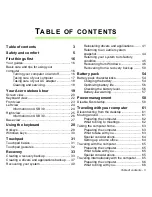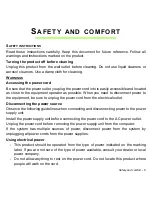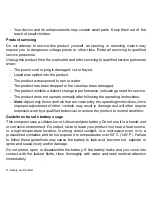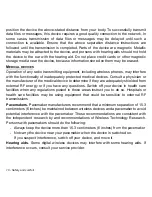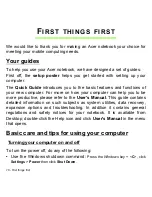
10 - Safety and comfort
position the device the above-stated distance from your body. To successfully transmit
data files or messages, this device requires a good quality connection to the network. In
some cases, transmission of data files or messages may be delayed until such a
connection is available. Ensure that the above separation distance instructions are
followed until the transmission is completed. Parts of the device are magnetic. Metallic
materials may be attracted to the device, and persons with hearing aids should not hold
the device to the ear with the hearing aid. Do not place credit cards or other magnetic
storage media near the device, because information stored on them may be erased.
M
EDICAL
DEVICES
Operation of any radio transmitting equipment, including wireless phones, may interfere
with the functionality of inadequately protected medical devices. Consult a physician or
the manufacturer of the medical device to determine if they are adequately shielded from
external RF energy or if you have any questions. Switch off your device in health care
facilities when any regulations posted in these areas instruct you to do so. Hospitals or
health care facilities may be using equipment that could be sensitive to external RF
transmissions.
Pacemakers.
Pacemaker manufacturers recommend that a minimum separation of 15.3
centimeters (6 inches) be maintained between wireless devices and a pacemaker to avoid
potential interference with the pacemaker. These recommendations are consistent with
the independent research by and recommendations of Wireless Technology Research.
Persons with pacemakers should do the following:
- Always keep the device more than 15.3 centimeters (6 inches) from the pacemaker
- Not carry the device near your pacemaker when the device is switched on.
If you suspect interference, switch off your device, and move it.
Hearing aids.
Some digital wireless devices may interfere with some hearing aids. If
interference occurs, consult your service provider.



